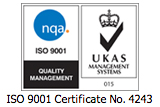How to Stop Construction Affecting Public Safety
In construction, a lot of work is done to ensure the safety of workers on building sites. It’s essential to keep people safe. Risk assessment after risk assessment keeps the professionals at ease, but how can you stop members of the public coming to harm? Read on for answers to the big questions about public safety and potential construction hazards, ensuring you’re aware of the best ways to avoid misfortune.
Fears are reasonably justified
Members of the public often approach with caution when they have to pass a construction site. Their fears are reasonably justified too. Back in 2012, a 91-year-old woman was injured quite severely by a collapsing metal construction fence in South London. The force of the falling fence fractured both her hip and her shoulder, knocking her to the ground.
The issue is one of finance as well as moral responsibility. According to The Health and Safety Executive (HSE), the law states you must “conduct your business without putting member of the public at risk” In this case, the contractor’s failure to ensure public safety led to them being fined heavily. The HSE determined that the 2-metre-high fence was poorly installed with no approved design.
It isn’t just falling fences that can cause harm, either. The HSE gives guidelines about a whole range of potential accidents: tools falling outside the construction boundary, falling objects, members of the public falling into work-trenches, or even getting struck by moving construction vehicles.
Avoiding hazards
It seems the best advice for avoiding these kinds of mishaps is to plan, plan, plan. Construction sites need to have defined physical site boundaries with suitable, approved fencing to give the site a clear and safe perimeter.
On top of this, they need to consider what is adjacent to the construction site, and consequently how to gain access and avoid unauthorised people doing so. Top quality barriers and covers are also vital to avoid falls into any excavations or manholes.
Another factor that can hugely reduce the risk is the right equipment and materials. Correct scaffolding and access equipment ensures members of the public are not injured while authorised workers are putting up, using, and taking down scaffolding.
As well as making the site safe while work is taking place, these measures need to keep the site secure after the working day is over. The main points to remember at the end of the working day are:
· to secure the site to avoid unauthorised entry
· make sure all barriers and covers are in place
· correctly store or lock away all vehicles, dangerous materials and hazardous substances.
Health and safety is clearly a big concern in this industry – and rightly so. To ensure your construction woes are kept to a minimum, check out our range of top quality security equipment. Our site security selection helps protect your valuable equipment while protecting both workers and the public. For more information on our products, call our friendly sales team on 01706 364 943 or use our online contact form.






